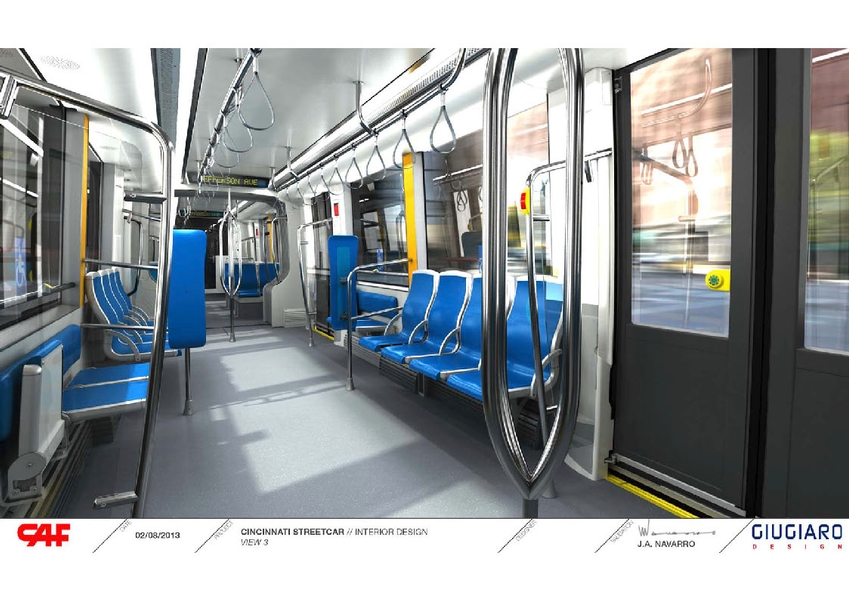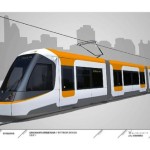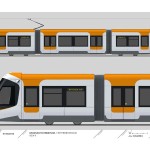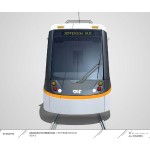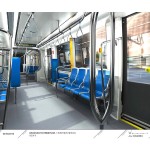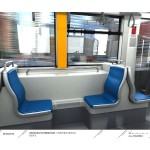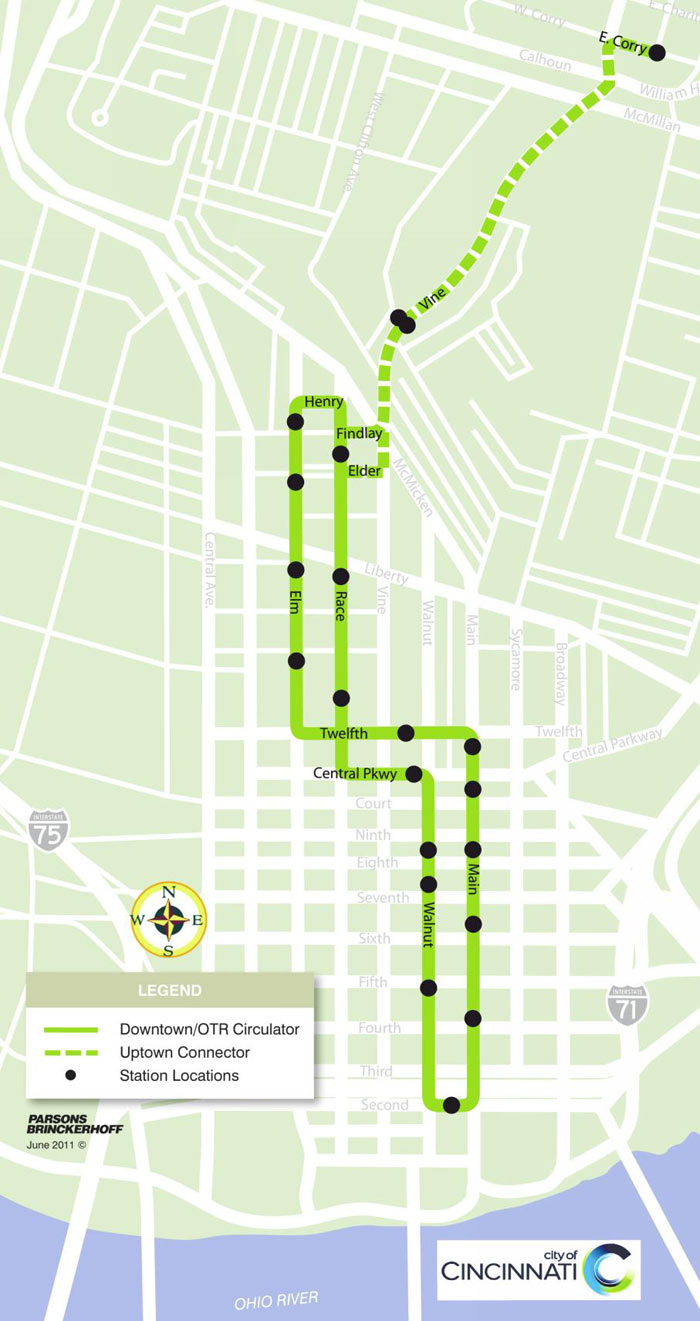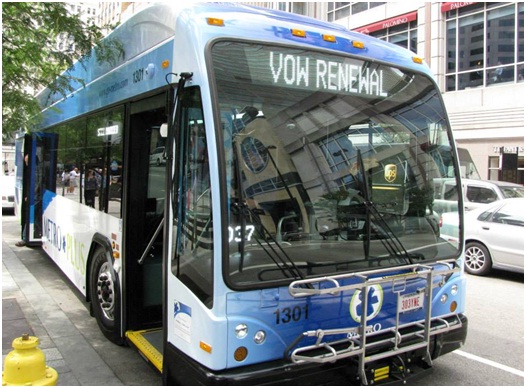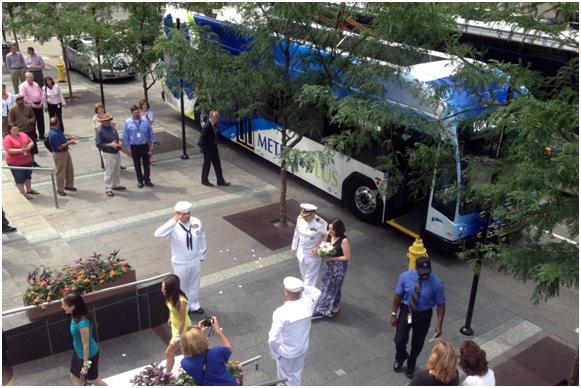The City of Cincinnati unveiled the official design of the streetcar to supporters in a gathering in Over-the-Rhine. With standing room only, crowds filled the Christian Moerlein Brewery with anticipation of the mystery to be revealed by Mayor Mark Mallory (D). The UrbanCincy team was there to film the event:
Daffodil Yellow, which actually looks closer to light orange, was selected as the primary exterior color based on a recommendation from a panel of 20 community members, which was then presented to the mayor for the final say.
Fade resistance and easy maintenance were deciding factors, city officials say, in addition to the overall design aesthetic. Inside the vehicle, Capri Blue seats provide a burst of modern color to the soft grey and stainless steel accents. Interior side panels highlight the walls with a matching shade of light orange.
Each of the streetcar vehicles will be capable of carrying 154 passengers at a time and will include a total of 32 seats, six of which fold up to make room for wheelchairs, strollers and bicycles.
One of the most noteworthy elements of Cincinnati’s rolling stock is that they will be the first light rail vehicles in North America to have 100% curb-level boarding at every stop. The manufactures say that curb-level boarding allows for easy, independent access for seniors and people with disabilities.
In contrast to a bus, which has a maximum capacity of 38-50 people, a person with mobility issues can enter and ride the streetcar without needing assistance from the driver to lower a platform and secure their wheelchair with straps. This feature is also beneficial for people with walkers, strollers, luggage and small children.
Attending the presentation were representatives from CAF USA, who was the winning bidder to manufacture five vehicles for Cincinnati’s streetcar system, and now five more vehicles for Kansas City as it piggybacks on Cincinnati’s order.
“We are so proud to be building your streetcar, which for us, is going to be a showcase,” said Virginia Verdeja, Vice President of Sales, CAF USA. “So many cities are looking at what’s happening here in Cincinnati. Our business is grateful to be part of a city that is the leading model for new streetcar systems around the nation.”
Meanwhile streetcar construction along the route continues to progress. Utility relocation is moving forward at various locations along the route and demolition is complete at Race and Henry which will allow crews to begin construction of the Maintenance and Operations Facility. Finally, city officials have disclosed that streetcar track is expected to begin tomorrow with the first section being installed along Elm Street in front of Music Hall.
